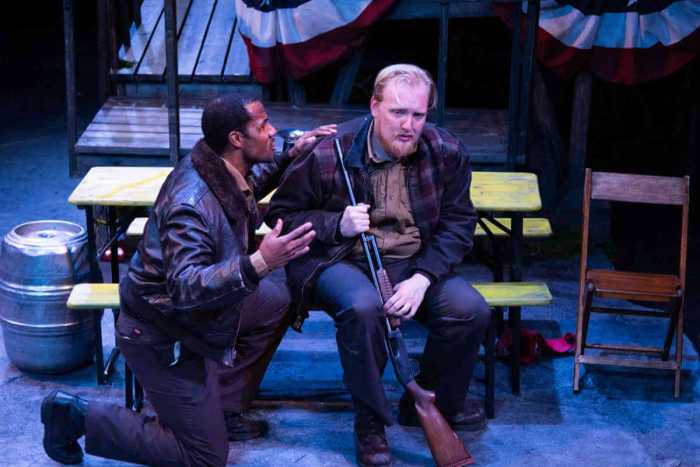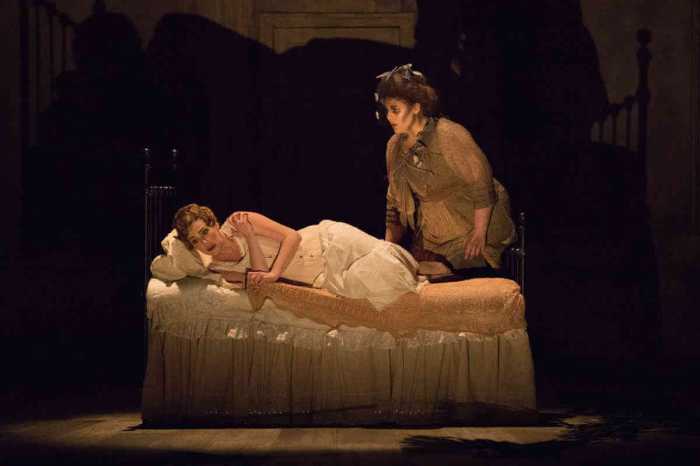In any of the much-discussed “golden eras” of the Metropolitan Opera, keeping casts of a production together was rarely a priority. Sometimes voice fans loved this. For example, in 1964-65 one could hear six Toscas, six Cavaradossis, and seven Scarpias divided among 16 house performances, virtually all of them international artists, many among the great names of the age — Callas, Tebaldi, Crespin, Tucker, Corelli, Gobbi, and more!
What this variety did not do was guarantee either musical or production values, since conductors also came and went and the ever-shifting casts basically brought along their own instincts and/ or routine. “Tosca” can bear such treatment, but many ensemble operas — say, “Figaro,” “Falstaff,” or “Pelléas” — quickly deteriorate or never gel.
Any longtime reader of this column knows I have spent much space questioning the Met’s casting policies and choices, past and present. Too much cronyism, be it for “London-based artists” or the Mariinsky mafia; too many fine singers ignored in favor of buzzy flashes in the pan; too much emphasis on telegenic artists. But one area in which the Gelb regime has improved matters artistically is in striving to keep casts basically together for entire runs (we’re talking “by and large” here, since the Zeffirelli “Turandot” and “Bohème” stagings rotate occupants like a P-Town B&B).
Operas’ designated hitters sometimes bring it home
Still, there are times when artists’ indispositions or previous engagements require changes: either substitutions or pre-agreed “cover” performances by singers standing by during the rest of the run. Sometimes substitutions have been remarkable (Waltraud Meier flying in for an unforgettable Isolde); other times, not so much. Covers, too, vary from better but less well-connected singers to questionable presences on the roster.
Bizet’s “Pêcheurs de perles” proved a hit this season. Diana Damrau suggested the piece to the Met, but the great singing at all three performances I witnessed came from tenor Matthew Polenzani, a “responsible” actor but a great musician with rare commitment to French style and its dynamic subtlety. People really listened. In the run’s final show on February 4, young Kentucky soprano Amanda Woodbury assumed her first Met leading role with considerable grace — not to mention lovely, pellucid tone far purer than Damrau’s sometimes hectoring timbre. Woodbury’s poised tone and relative calm gave the opera the still center it needed, without Damrau’s well-intended but manic physicality. The audience loved Woodbury, and I would love to hear her as Mozart’s Constanze. Conductor Antony Walker led the last two “Pêcheurs” shows, with less glistening instrumental precision but also fewer “forced march” tempi than Gianandrea Noseda.
Two days later came “Il trovatore,” an enjoyable if fairly routine repertory performance largely notable for two stops due to the malfunctioning stage turntable. Dolora Zajick continued to demonstrate remarkable vocal longevity and commitment as Azucena. Marcello Giordani, if manifestly past his zenith, started quite well, but could not sustain Manrico’s quietly lyrical wedding song “Ah sì, ben mio” and began to encounter problems. Giordani’s top voice remains pretty impressive; unlike the Bertis of the world, he does try to project a romantic hero. Angela Meade sang with considerable power and clarity, showing again that there is little in the middleweight Verdi repertory that she cannot perform with admirable vocal finesse, even beauty. What Meade lacked, as often, was a more than dutiful dramatic impulse and connection with words.
In the fall, the ailing Dmitri Hvorostovsky scored a moving triumph as di Luna; alas, his continuing treatment prevented his reappearance in stage work. One wondered — again, as often — if the Met contacted Stephen Powell, but the largely unknown Juan Jesús Rodriguez, tall and suitably Spanish, turned in a more than respectable performance, with strong high notes if a timbre sounding somewhat pitched for outdoor arena-style opera. If no Hvorostovsky, Cappuccilli, or Bruson, Rodriguez delivered a di Luna not unworthy of the Met stage. Marco Armiliato led acceptably.
The fine bass Kwangchul Youn honorably straddled both the “Trovatore” and “Maria Stuarda” casts. The Donizetti opera, which Joyce DiDonato’s shattering, intense Queen of Scotland redeemed when new from a gauche, visually barren David McVicar staging, returned with Sondra Radvanovsky, taking on the “Tudor Triple Crown” this season. Radvanovsky — never as ideally word-based as one wishes — offered a highly commendable job as Maria, with great swaths of beautiful tone, particularly in piano passages. She admirably created a mood — if not as sharply drawn an individual portrait as diDonato’s — and showed more taste and discretion in her ornamentation than in this past fall's “Anna Bolena.”
“Fidelio” at Caramoor this July should reveal to local audiences more of Elza van den Heever’s true strengths than Elizabeth I here: only a few notes and phrases emerged enjoyably, and the lurching camp characterization McVicar imposed struck me again as old-fashioned misogyny.
Celso Albelo’s Leicester shared a nasal, honey/ lemon quality with the late Alfredo Kraus, also from the Canary Islands. But Albelo’s line showed little of the musical insight or charm of phrasing that made Kraus a tenor paragon. Albelo — unflatteringly costumed — wasn’t bad, but was a definite step down from Polenzani when this show was new.
The scheduled cover performer here — for the fine, under-deployed bass-baritone Patrick Carfizzi — was David Pershall, solidly adequate as Cecil but overinflating his sound as he did in OONY’s “Roberto Devereux.” Conductor Riccardo Frizza knows his trade, but should have stomped on the singers (particularly Albelo) when they sought to end numbers with 1970s style blared, long-held tonic high notes.
The night wasn’t magical, but Radvanovsky certainly merited and rose to this chance at a great role.
Other highly promising “cover” performances to catch in the Met’s upcoming months involve three rising stars: Alexey Lavrov as Malatesta (“Don Pasquale”) on March 18; Mario Chang as Nemorino (“Elisir d’amore”) on April 2 and 7; and Ben Bliss as Belmonte (“Entführung aus dem Serail”) on April 30.
David Shengold (shengold@yahoo.com) wries about opera for many venues.



































